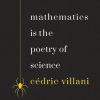Tracking and Mapping of Spatiotemporal Quantities Using Unicellular Swarm Intelligence Visualisation of Invisible Hazardous Substances Using Unicellular Swarm Intelligence 1st Edition by John Oluwagbemiga Oyekan 3319274256 9783319274256
$50.00 Original price was: $50.00.$25.00Current price is: $25.00.
Tracking and Mapping of Spatiotemporal Quantities Using Unicellular Swarm Intelligence: Visualisation of Invisible Hazardous Substances Using Unicellular Swarm Intelligence 1st Edition by John Oluwagbemiga Oyekan – Ebook PDF Instant Download/DeliveryISBN: 3319274256, 9783319274256
Full download Tracking and Mapping of Spatiotemporal Quantities Using Unicellular Swarm Intelligence: Visualisation of Invisible Hazardous Substances Using Unicellular Swarm Intelligence 1st Edition after payment.
![]()
Product details:
ISBN-10 : 3319274256
ISBN-13 : 9783319274256
Author: John Oluwagbemiga Oyekan
The book discusses new algorithms capable of searching for, tracking, mapping and providing a visualization of invisible substances. It reports on the realization of a bacterium-inspired robotic controller that can be used by an agent to search for any environmental spatial function such as temperature or pollution. Using the parameters of a mathematical model, the book shows that it is possible to control the exploration, exploitation and sensitivity of the agent. This feature sets the work apart from the usual method of applying the bacterium behavior to robotic agents. The book also discusses how a computationally tractable multi-agent robotic controller was developed and used to track as well as provide a visual map of a spatio-temporal distribution of a substance. On the one hand, this book provides biologists and ecologists with a basis to perform simulations related to how individual organisms respond to spatio-temporal factors in their environment as well as predict and analyze the behavior of organisms at a population level. On the other hand, it offers robotic engineers practical and fresh insights into the development of computationally tractable algorithms for spatial exploratory and mapping robots. It also allows a more general audience to gain an understanding of the design of computational intelligence algorithms for autonomous physical systems.
Tracking and Mapping of Spatiotemporal Quantities Using Unicellular Swarm Intelligence: Visualisation of Invisible Hazardous Substances Using Unicellular Swarm Intelligence 1st table of contents:
1 Introduction
1.1 Motivation
1.2 Challenging Issues and Research Objectives
1.3 Proposed Approaches
1.3.1 Searching Nature for Biological Solutions
1.3.2 Importing Biological Solutions to Engineering
1.3.3 Refining, Re-engineering and Combining Solutions
1.3.4 Deployment of Biological Solution on Robots
1.3.5 Testing
1.4 Research Methodology
1.4.1 Experimental Setups
1.4.2 Data Collection
1.4.3 Data Analysis
1.5 Book Contributions
1.6 Book Layout and Relevant Peer Reviewed Publications
References
2 Literature Review
2.1 The Case for Multi-Agent Coverage
2.2 Present Multi-Agent Coverage Techniques
2.2.1 The Use of Voronoi Diagrams (Also Known as Voronoi Tessellation)
2.2.2 The Use of Virtual Spring Mesh
2.2.3 Optimotaxis
2.2.4 Deterministic Annealing
2.3 Behaviour Based Robotics
2.3.1 Source Seeking Algorithms
2.3.2 Multi-Agent Control Algorithms
2.4 Summary
References
3 Investigative Process
3.1 Identifying the Parameters
3.1.1 Bacteria Controller
3.1.2 Flocking Controller
3.2 Simulations
3.2.1 Low Peclet Number Environment
3.2.2 Medium Peclet Number Environment
3.2.3 Experiments in a Three-Dimensional Environment
3.3 Physical Experiments
3.3.1 Low Peclet
3.3.2 Medium Peclet
3.4 Data Collection and Analysis
3.4.1 Simulated Experiments
3.4.2 Physical Experiments
3.5 Problems Encountered and Addressed
3.6 Summary
Reference
4 Developing and Implementing a Source Finding Controller
4.1 Berg and Brown Controller for Low Peclet Environment
4.1.1 Control Law
4.1.2 Simulation Implementation
4.1.3 Results
4.1.4 Implementation on a Physical Platform
4.1.5 Results
4.1.6 Discussion and Tuning the System
4.2 Berg and Brown Controller for Medium Peclet Environment
4.2.1 Control Law
4.2.2 Simulation Implementation
4.2.3 Results
4.2.4 Implementation on a Physical Platform
4.2.5 Results
4.2.6 Discussion and Tuning the System
4.3 Comparison with Moth Strategy
4.3.1 Experimental Setup
4.3.2 Experiments in Medium to High Peclet Environment
4.4 Summary
References
5 Relationship Between the Berg–Brown Model and the Keller–Segel Model
5.1 Berg and Brown to Keller–Segel Proof
5.1.1 Control Law
5.2 Experiments with Macroscopic
5.2.1 Experiments with One-Dimensional Function
5.3 Macroscopic to Microscopic
5.4 Experiments with Microscopic
5.4.1 Experiments with One-Dimensional Function
5.4.2 Experiments with Two-Dimensional Function
5.5 Implementation on Physical Platforms
5.6 Summary
References
6 Behaviour Based Coverage Controller
6.1 Developing a Behaviour Based Coverage Controller
6.1.1 Spatial Function: Experiments and Results
6.1.2 Pseudo-Dynamic Spatiotemporal Function: Experiments and Results
6.1.3 Dynamic Spatiotemporal Function: Experiments and Results
6.2 Tuning the Behaviour Based Coverage Controller Using Machine Learning
6.2.1 Using a Proportional-Integral Control Law
6.2.2 Incorporating Genetic Algorithm
6.2.3 Incorporating a Weighted Averaging Scheme
6.3 Comparison with Voronoi Partition Method
6.3.1 Experiments and Results
6.3.2 Discussion
6.4 Proof of Convergence for the Behaviour Based Coverage Controller
6.5 Summary
References
7 Improvements and Towards Real World Applications
7.1 The Case for the Berg and Brown Controller
7.1.1 Experimental Setup
7.1.2 Simulation and Results
7.1.3 Discussion
7.2 Improving the Berg and Brown Controller
7.2.1 Introducing the Filter
7.2.2 Introducing Other Filter Algorithms
7.3 Towards Deployment in the Physical Environment
7.3.1 Towards Unmanned Aerial Vehicle (UAV) for Aerial Pollution Monitoring
7.3.2 Towards Robotic Fish for Pollution Monitoring in Sea Ports
7.4 Summary
References
8 Conclusion
8.1 Overview of Research
8.2 Limitations
8.3 Future Work
8.3.1 Physical Experiments for Flocking Agents
8.3.2 Borrowing from Simulated Annealing Theory
8.3.3 Exploring Heterogeneity in Swarm Parameters
8.3.4 Single Agent Mapping
8.3.5 Deployment in Marine Environments Applications
8.3.6 Agent Spatiotemporal Disturbances
People also search for Tracking and Mapping of Spatiotemporal Quantities Using Unicellular Swarm Intelligence: Visualisation of Invisible Hazardous Substances Using Unicellular Swarm Intelligence 1st:
temporal and spatial
spatiotemporal mapping
temporal and spatial accuracy
temporal and spatial variation
spatiotemporal analytics
Tags: Tracking, Mapping, Spatiotemporal Quantities, Unicellular Swarm, Intelligence, Visualisation, Invisible Hazardous, Substances, John Oluwagbemiga Oyekan
You may also like…
Computers - Computer Science
Computers - Computer Science
Computers - Computer Science
Computers - Hardware
Computers - Programming
Computers - Computer Science
Swarm Intelligence Algorithms: Modifications and Applications 1st Edition Adam Slowik
Computers - Computer Science












